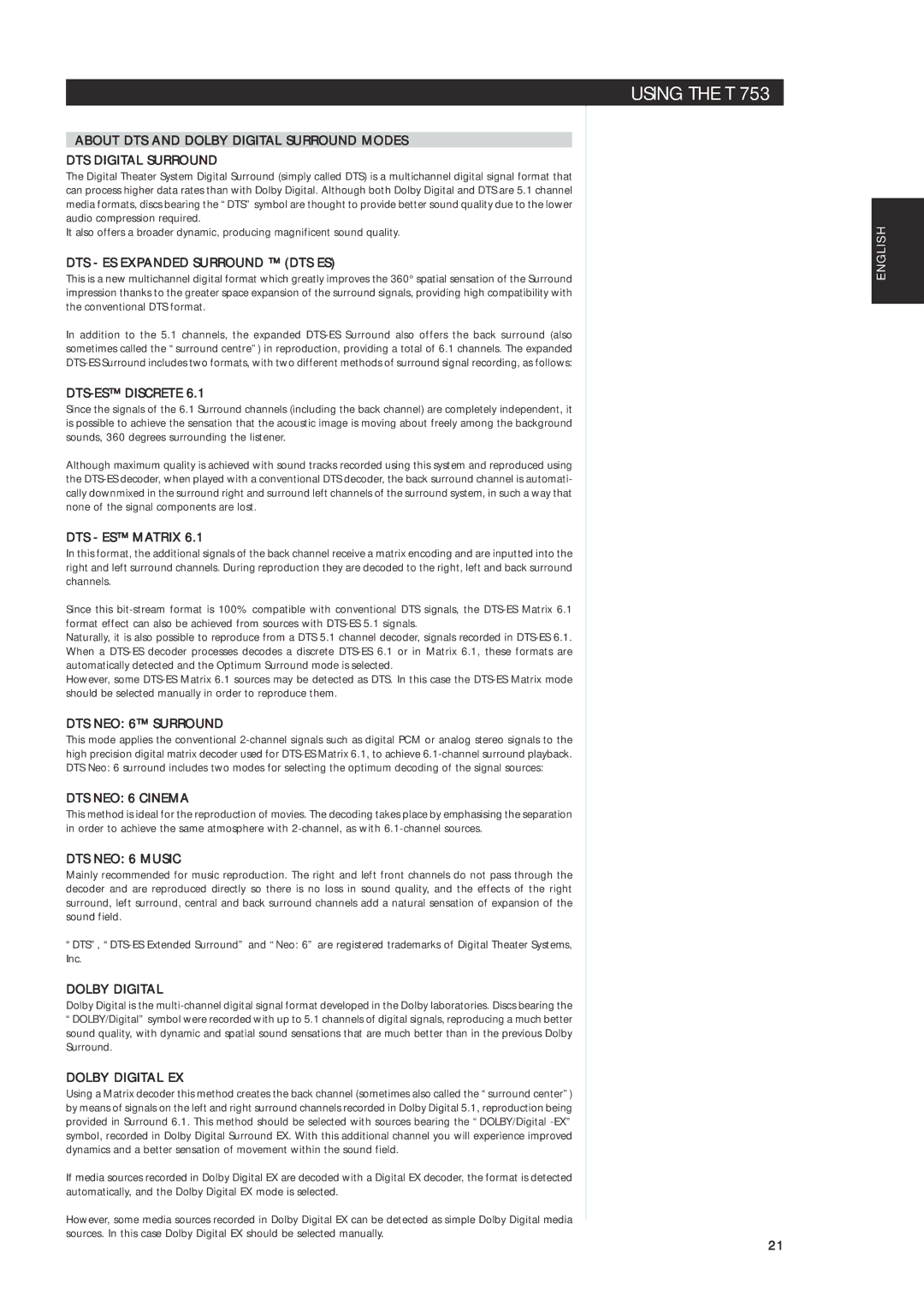T 763 specifications
The NAD T 763 is a high-performance audio-video receiver that has garnered attention for its exceptional sound quality and versatile features. Designed for home theater enthusiasts, the T 763 combines advanced technologies to deliver an immersive audio experience, making it a recommended choice for both movie lovers and music aficionados.One of the standout features of the NAD T 763 is its power output. It delivers 70 watts per channel into 8 ohms, ensuring that it can drive a variety of speakers with ease. This model integrates NAD's proprietary PowerDrive technology, which optimizes power delivery and ensures dynamic sound reproduction, even in demanding passages. This makes it suitable for a range of audio setups, from small living rooms to large home theaters.
The T 763 supports multiple audio formats, including Dolby Digital and DTS decoding. This capability allows users to enjoy high-fidelity soundtracks from DVDs and Blu-ray discs, creating an enveloping sound experience. Moreover, its compatibility with Pro Logic II means that it can effectively decode stereo signals into multi-channel formats, enhancing the listening experience for older media.
In terms of connectivity, the NAD T 763 does not disappoint. It features multiple inputs, including several HDMI ports, optical and coaxial digital inputs, and legacy connections like RCA for older equipment. This extensive range of connections allows users to integrate various sources, such as game consoles, streaming devices, and CD players with ease.
The T 763 also includes a user-friendly interface that simplifies operation. The intuitive on-screen menus make it easy to navigate through settings and customize audio performance. Additionally, the receiver comes with a remote control, providing convenience at your fingertips.
Another notable characteristic is the NAD's commitment to build quality. The T 763 is constructed with robust materials that enhance durability, ensuring that it can withstand years of use. The sleek design fits seamlessly into any audio-visual setup, appealing to aesthetic sensibilities alongside its performance capabilities.
In summary, the NAD T 763 is a versatile and powerful audio-video receiver that excels in sound quality and connectivity. With its innovative technologies and solid build, it stands out as a compelling option in the competitive landscape of home theater equipment. Whether for movie nights or music playback, the T 763 promises to elevate the home entertainment experience.

